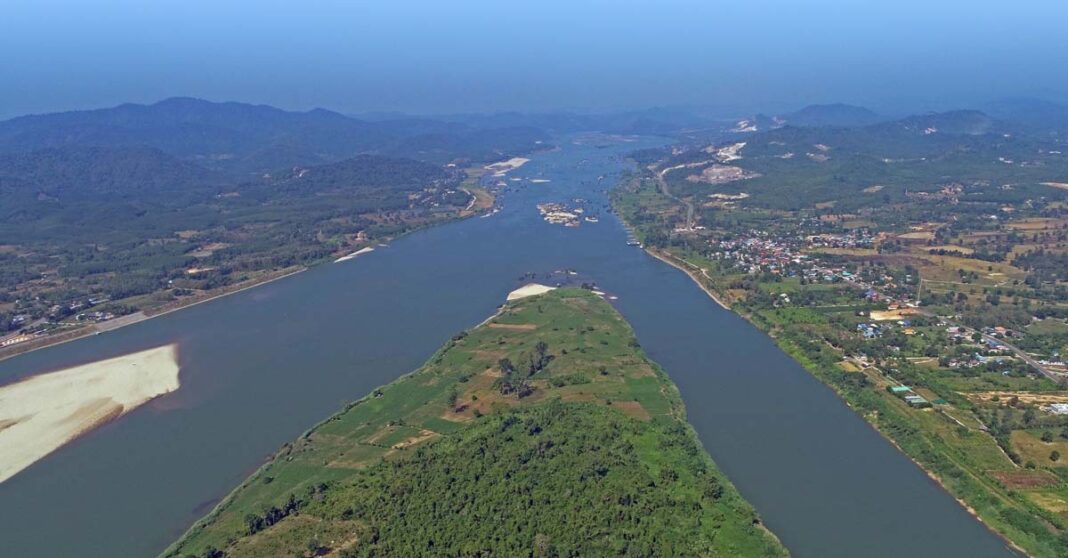Policy leaders, academics, international organizations, NGOs, and media have all warned that tensions between nation-states sharing watercourses would be the source of inevitable conflict in the 21st century.
In the area surrounding the Mekong River on which the livelihoods of 70 million people depend, dam-building and other water infrastructure developments by each riparian country have raised alarm bells from other riparian countries, stakeholders, and even powers outside the region over emerging impacts and potentially more severe ones in the future.
In Africa, where the Nile River’s waters touch more than 100 million people, long-standing disputes on water use between upstream states and the most downstream power, Egypt, have sometimes threatened to spiral into conflict. Even in North America in the Colorado basin covering 40 million inhabitants, the abstraction of water in the US, in order to meet the growing demands of cities and farmers along the River, has led to negative impacts in downstream Mexico and disagreements between both countries.
Therefore, is conflict over transboundary water management inevitable?
In a recently-released, major international book, Dr. Anoulak Kittikhoun, Chief Strategy Officer of the Mekong River Commission (MRC), contests that there is no historical evidence of countries actually going to war over shared water resources and that governments have tended towards cooperation. Dr. Anoulak, a Lao political scientist, and his colleagues argue that a primary factor in the achievement of riparian stability is functioning institutional frameworks, especially River Basin Organizations (RBOs).

The book states that context varies considerably across different regions and basins and affects the ways RBOs operate. Factors such as physical and hydrological conditions (from arid basins such as the Nile and the Aral Sea to basins characterized by relatively abundant water such as the Mekong, Danube, and the Rhine), socio-economic development and regional integration (from poor regions such as central and west Africa to rapidly industrializing Southeast Asia and advanced Europe and North America), and the size/power/influence of riparian states and external interests, such as the Danube with 19 riparian states (including Germany) or the Nile with 11 riparian states (including Egypt), or the Niger with 9 riparians (including Nigeria), or the Mekong with 6 riparians (including China), as well as basins shared by only two riparian states, such as between the US and Canada.
In a Facebook LIVE session of the book launch, Dr. Anoulak and Germany’s Dr. Susanne Schmeier, an associate professor at IHE Delft who co-edits the book, make the case that two sets of four interrelated factors are key: the level of development of the RBO’s legal mandates and established institutional structures together with their technical and strategic resources and capacities (see Figure 1).

When these correlate to sufficiently high degrees, RBOs have and can play effective roles in managing and resolving water and related differences, tensions, and disputes. Those basins with other combinations of these two sets of factors have various troubles and tribulations.
For example, the analytical framework put forth by the authors suggests that the river basin organizations that manage the Columbia, Rio Grande, Great Lakes, Danube, Rhine, Senegal, and Mekong Rivers appear to be the most equipped to handle conflict and resolve transboundary issues. This is because organizations like the Mekong River Commission are characterized by, among other things, clear legal mandates and well-defined substantive and procedural rules for shared water resources, high-level political arenas for joint deliberations, operational and technical/expert working mechanisms, and strong secretariats/agencies serving and monitoring the RBO’s institutions and agreements. The authors argue that this functional capacity leads to an effective outcome whereby trust is shared among the riparian countries and fosters an environment of cooperation (upper right quadrant).
“The framework is analytical and not prescriptive or judgmental,” said Dr. Anoulak, who has been a senior official at the MRC for nearly ten years and is known internationally for his MRC and water diplomacy advocacy, and is tipped by many to be the next Chief Executive Officer of the MRC.
The framework allows for a conceptual basis with which to analyze other RBOs and provides a checklist of the traits necessary for effective management of transboundary issues.
River Basin Organizations in Water Diplomacy has been well received by experts and observers around the world.
“This book provides welcome insights into how river basin organizations from a range of political, cultural, and physical settings have addressed sensitive development decisions,” says Jeremy Bird, former Director-General of the International Water Management Institute. “It goes beyond descriptions of institutional form and function to examine how RBOs have engaged in water diplomacy and the related difficulties, successes, and limitations.”
Former President of Slovenia and former Assistant Secretary-General of the UN Danilo Turk, who served as Chair of the Global High-Level Panel on Water and Peace, writes that “This book offers valuable insights into the importance of River Basin Organizations as a key element in this global picture and should stimulate further thinking about the needed innovations that will strengthen water cooperation as a globally important instrument of peace.”

The book has collaborations from leading practitioners and experts – the who’s who of the water cooperation and diplomacy world – such as Aaron Wolf, David Grey, Owen McIntyre, Zha Daojiong, Ivan Zavadsky, and Gabriel Eckstein.
“We hope the book will provide inspiration for river basin organizations and their partners to learn from one another, build strengths, tackle weaknesses, and fill gaps. This is the only way to better serve the countries and the communities depending on these magnificent rivers the world over,” concluded Dr. Anoulak.



